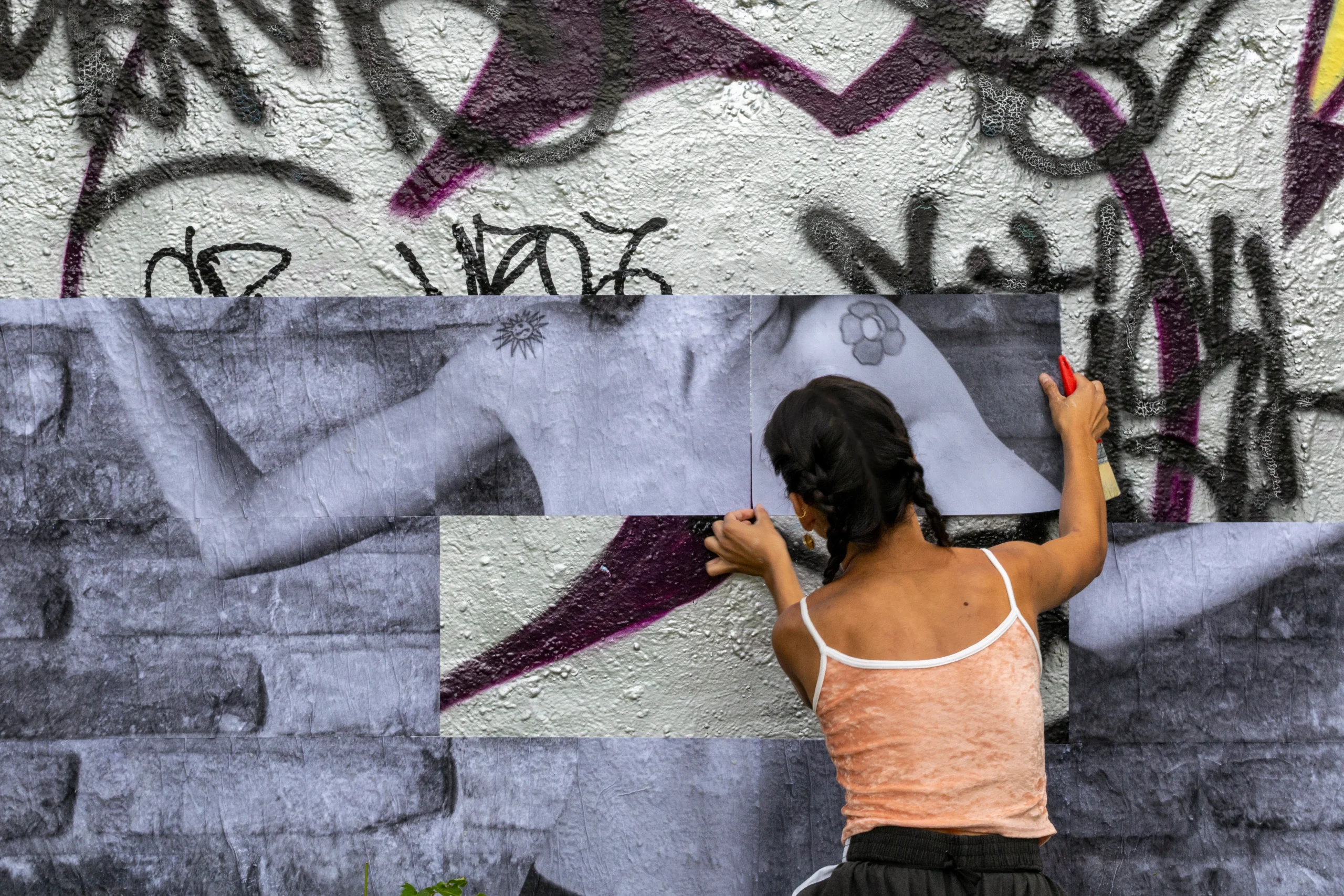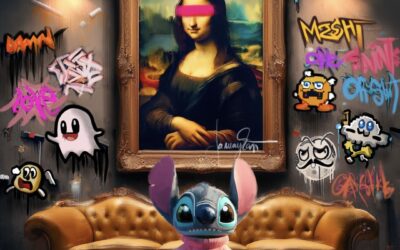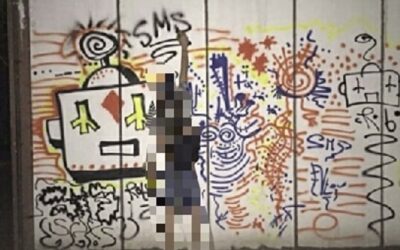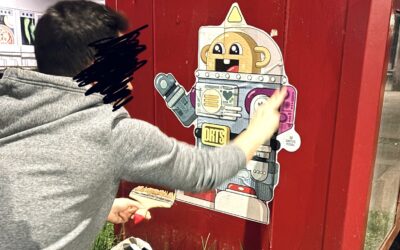How terribly funny it would be if someone covered the streets with their own breasts. Imola's posters depict the point in a rather abstract way, which is rather a gag on her part. The idea started out as a visual social experiment that she could smile at.
When did your first work hit the streets?
It depends on what you consider it to be. I started with stickers, as a complete layman, absolutely not seeing and observing street signs, about three or four years ago, and then this world opened up to me completely. To this day I still really love it, stickering is the biggest part of my activity, I've always done relatively less posters, and those are still around from mid-2021 to today.
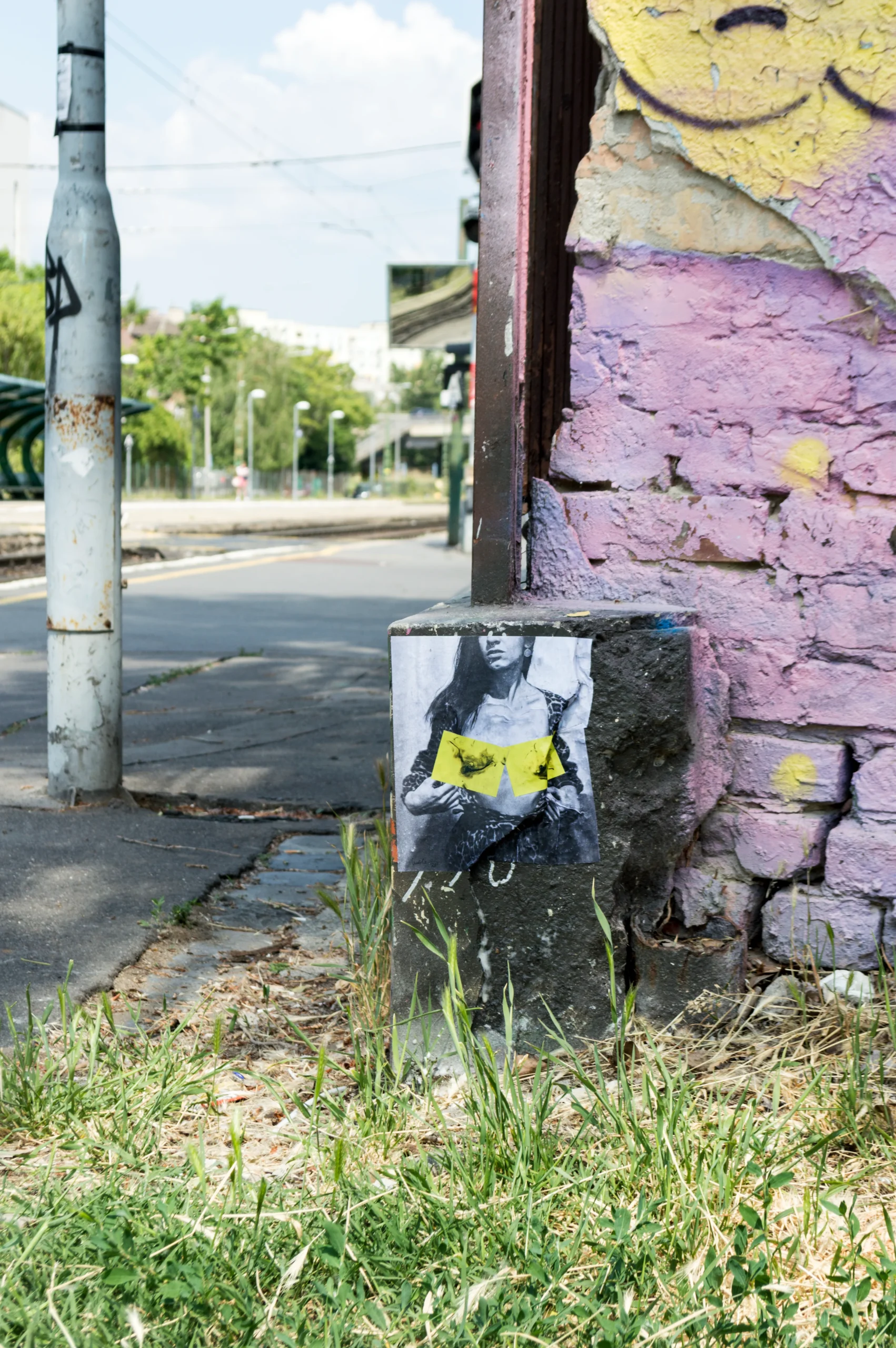
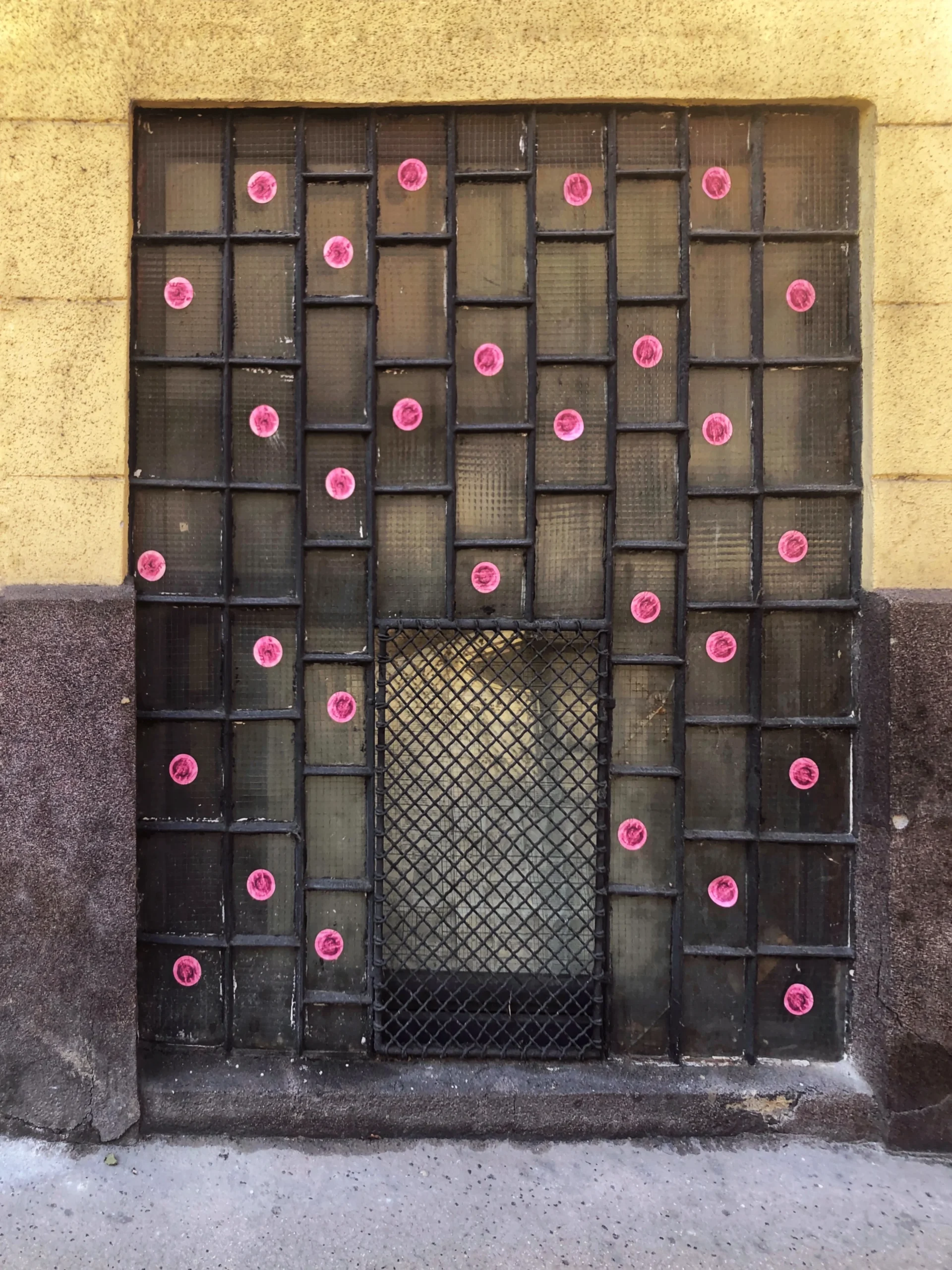
Where did the stage name come from?
Hmm, well the name means many things. For example, the old Hungarian word imola means swamp, seaweed, but there is also a species of cornflower. It's a pretty purple plant, you can find it in many places here in Hungary, near Újpest on the Danube and around here and there. It was first used as a feminine name by Mór Jókai in his book Bálványosi vár (Bálványosi Castle), which I read mainly because of this, and it's a very, very good novel. That's about all I can tell you about it, it was actually my dad's idea. ¯\_(ツ)_/¯
How would you describe your art?
Wow, that's a difficult question, it's quite complex, but I think about it a lot, it's still forming in me today. It became street art, but it absolutely didn't start out as street art, it was never motivated by anything like that, and I would say that's not the primary label I would use for it today. It's more an outgrowth of some kind of inner urge, the basic pillar of which is the desire to leave a mark, as in graffiti. It's because of the stickers. Of course, technically it's absolutely different, and the later posters have since been "messaged", although that was never the main intention either, it was more a gag, a visual social experiment that started in me, but I'll explain that in a moment...
Mostly I would say it's all for my own amusement, to warm my own soul, to be able to smile at myself on the street and laugh at something that only I understand most of the time. Well, that's my sense of humor, just like life...
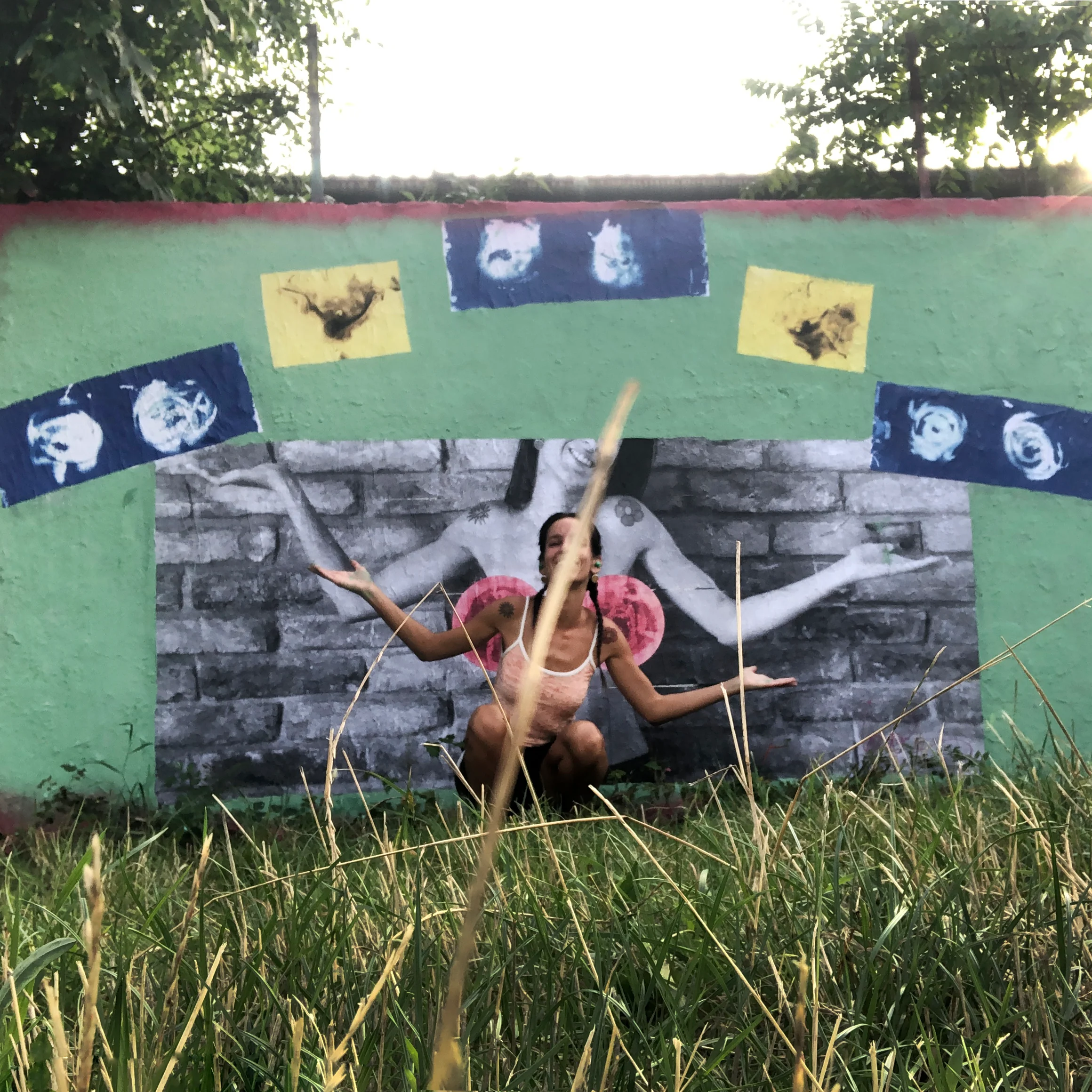
What message do your works send?
Oh, the message, hehe... There is no message, that is, the message is built around those who need it, so usually other people or situations. Feminist stance (finally a woman on the street!) or self-loathing (but who is this woman and what is she doing?!), that sort of thing, who needs what stance at what time.
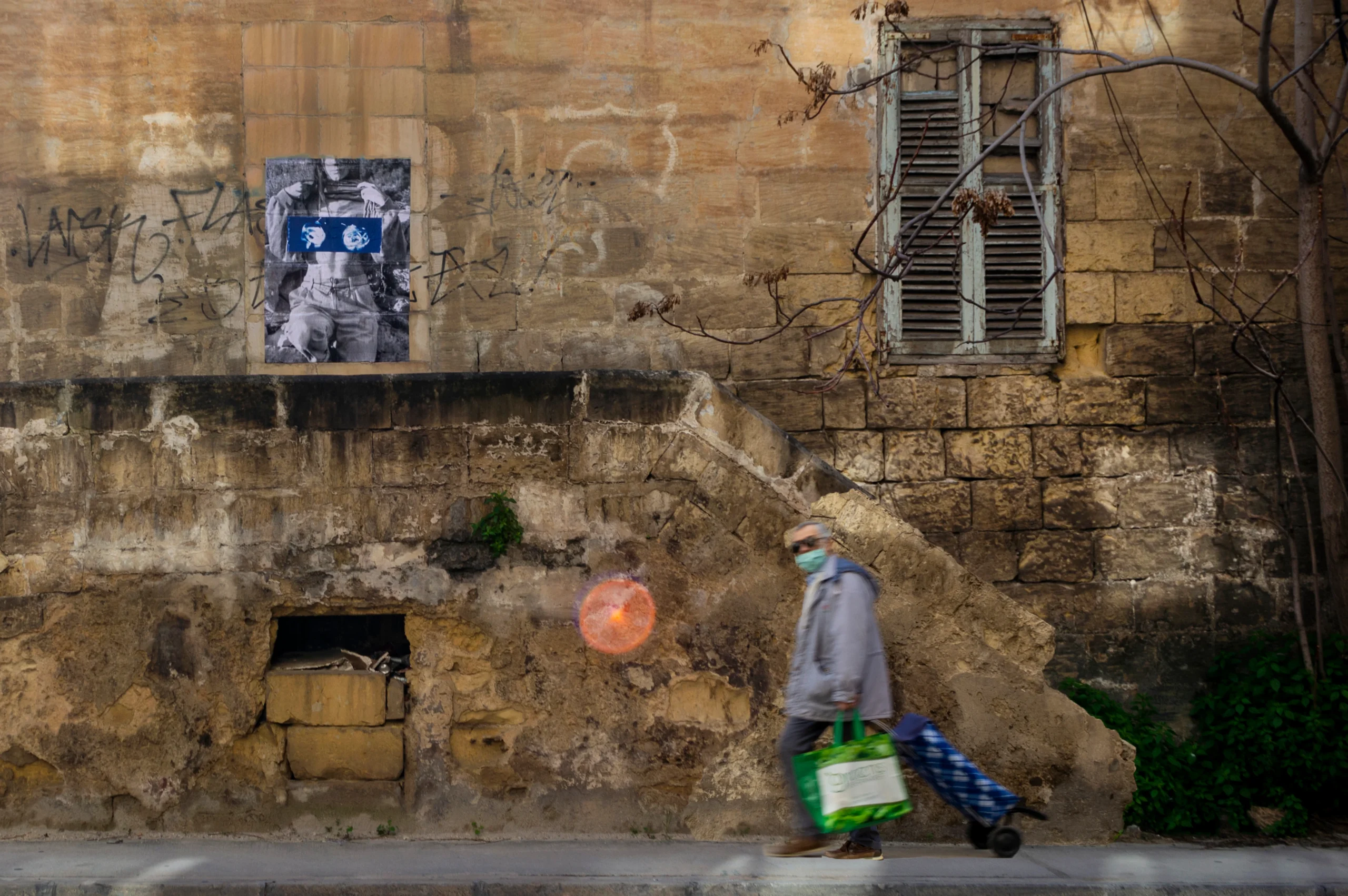
When I started, the originals of the stickers came about spontaneously, on my own initiative, in the university photo lab, where I was experimenting with different techniques and materials, and it seemed like a great idea to mix myself with all sorts of chemicals and make prints of my breasts. That was it.
Then the papers sat in a drawer for years, and I woke up one day thinking how hilarious it would be if I could plaster the streets with them and no one would have a clue that I was shoving my breasts in their faces. Haha. I'll add that the prints are pretty abstract in their depiction, and so for me it's an inside joke with myself, really. It still amuses and uplifts me to this day, and really what else would make sense if not that. That was the 'message' at the start.
Then the posters came, and I thought it would be worth putting the stickers in some kind of context to make them more understandable, and then I got curious. This concept is also a bit difficult to explain, and now I'm going to shoot another punchline; the posters actually have a semi-nude photo underneath the stickers, I never cheat.
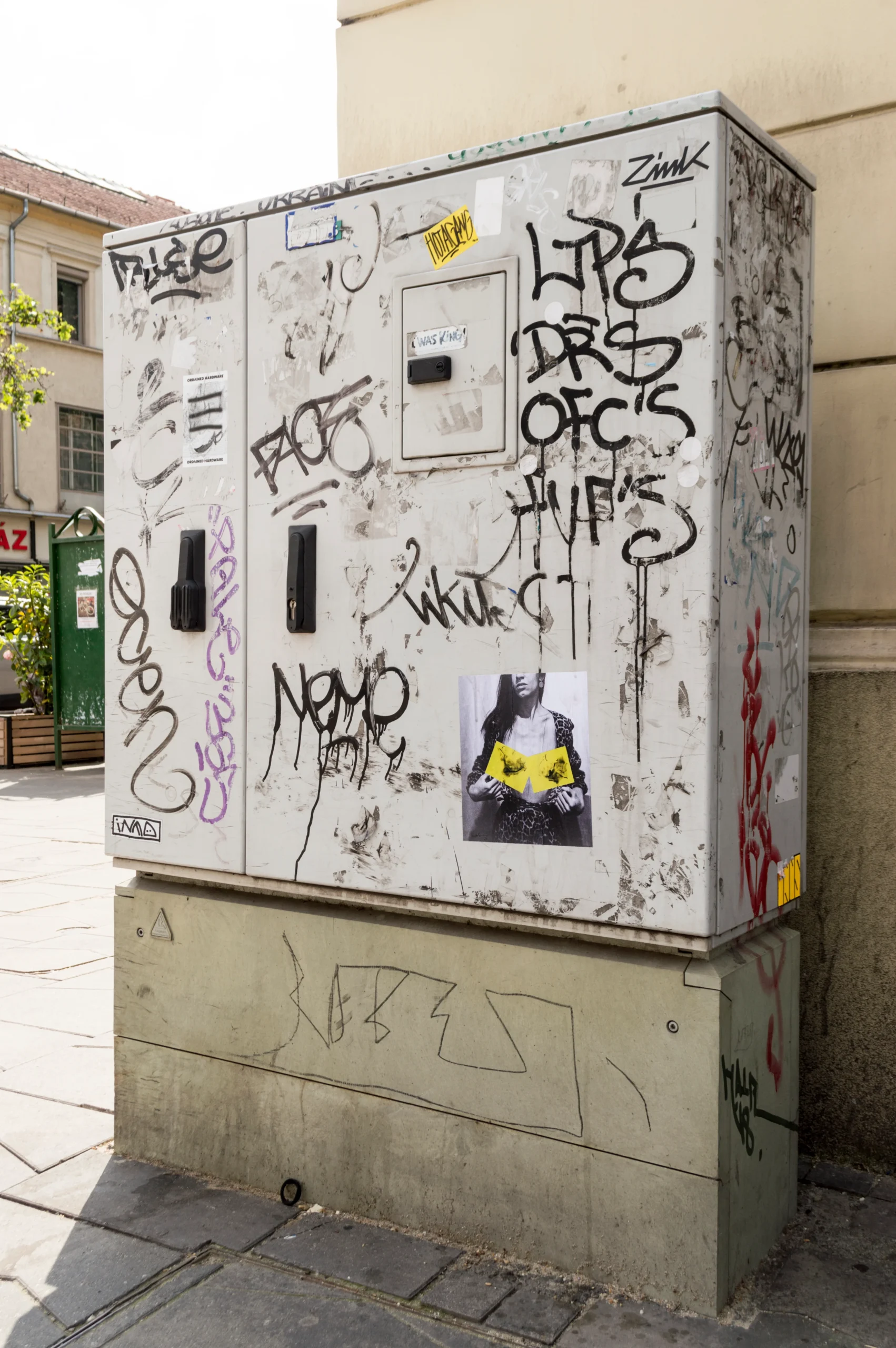
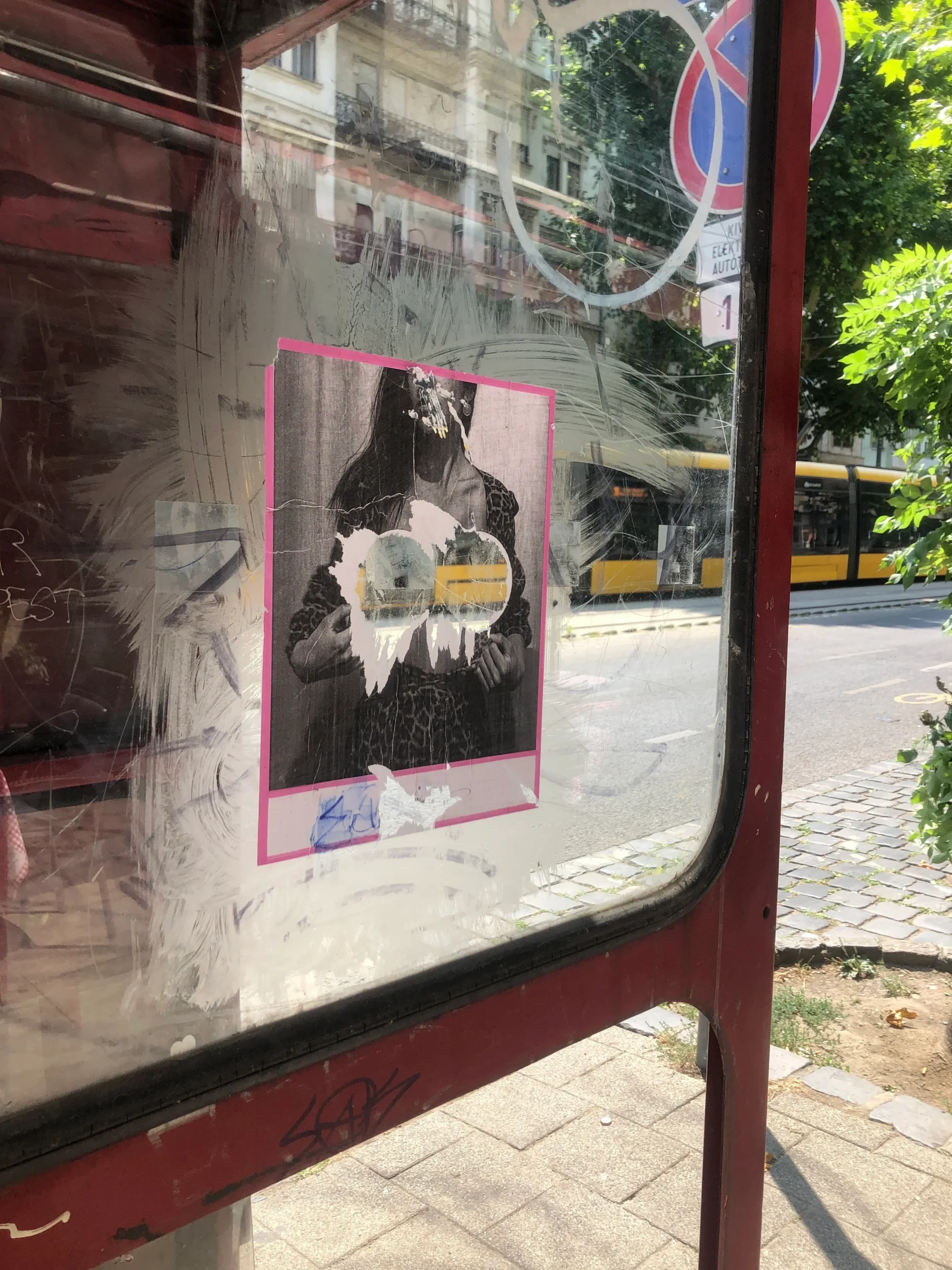
I wondered what the reaction would be, whether anyone would be brave enough in the open, how strong the instinct and curiosity would be, and where, if any, boundaries of respect would be drawn. And respect for what? Of that person? The female body? Of an individual creation made by someone? I was much more interested in the answers of others, of society, to many questions, than in giving them answers or guidance, a 'message' if you like.
What does a creative process look like for you?
If I start from the basics, it's mostly at an awful length. 😀 I'll give you the broad outlines and sketches, but it's still a lot, and it's quite complex. It's all based on photography, because on the one hand it's what I studied at university, and on the other hand it's a means of self-expression for me, a language to talk about my own reality here and in the visual arts.
The stickers, of which three basic series have been produced so far (yellow, blue and pink), are analogue prints made using different alternative photographic processes. One of them requires relatively more expertise, tools, chemical knowledge and shorter preparation times, the other less. Depending on the technique used, there are original sticker bases on special paper that can be visible in minutes, but there have been some that took almost a whole day, and some that were exposed to the summer sun on a rooftop in Buda for months using very basic materials. This is the genre, which is one of the reasons why I am so impressed.
Then I scan the originals, which are 1:1, and the dealer prints the sticker from this digital file. So the main creative process only happens once, but it's exciting as hell and usually the result of a lot of preparation and experimentation. For the first two series, the yellow and the blue, I did the printing myself and cut the sheets manually with a snicker for nights on end, but then for the pink round shape I had to let go of that part of the process for quality and efficiency. For gluing, I now just place a piece order from time to time and then head to town.
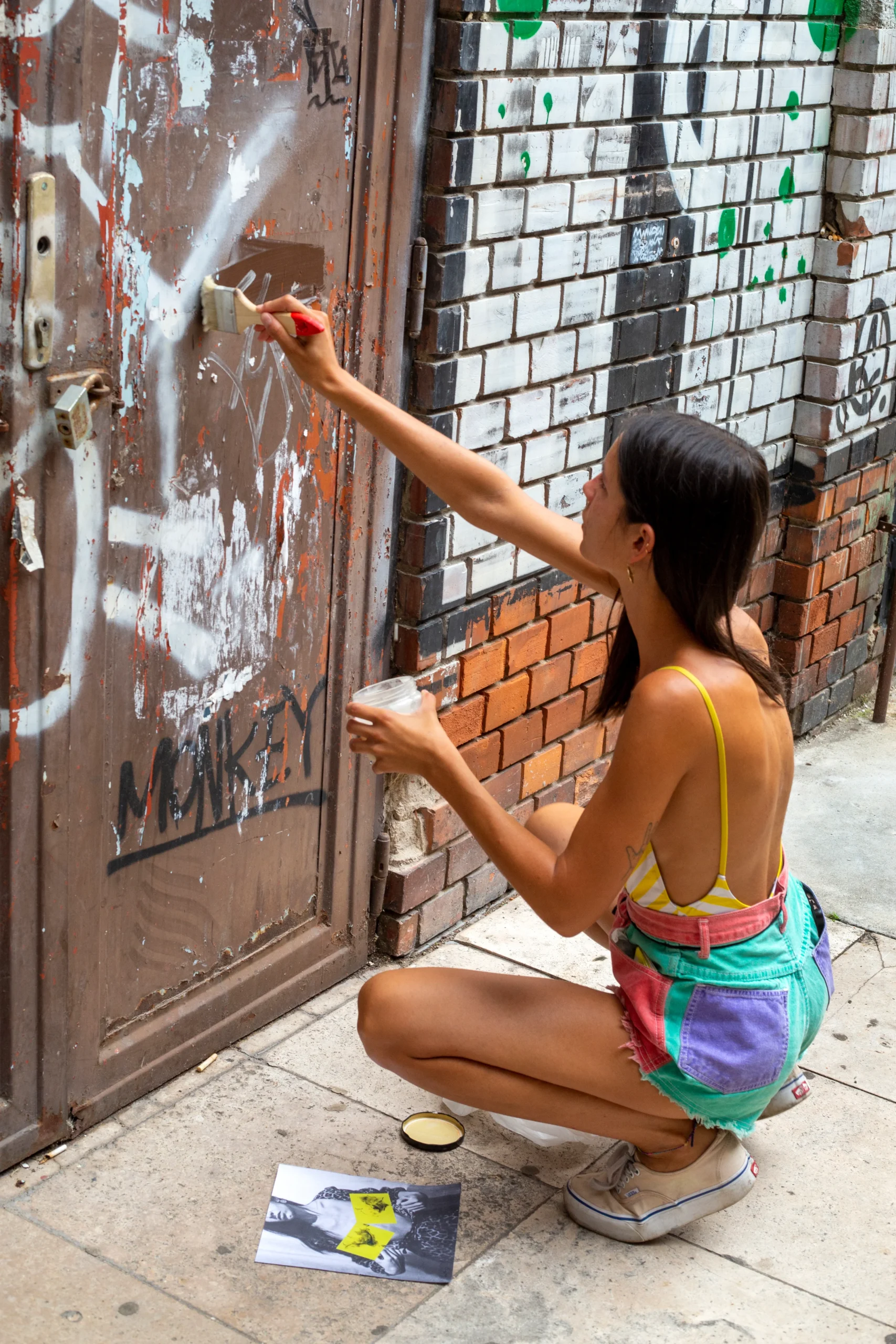
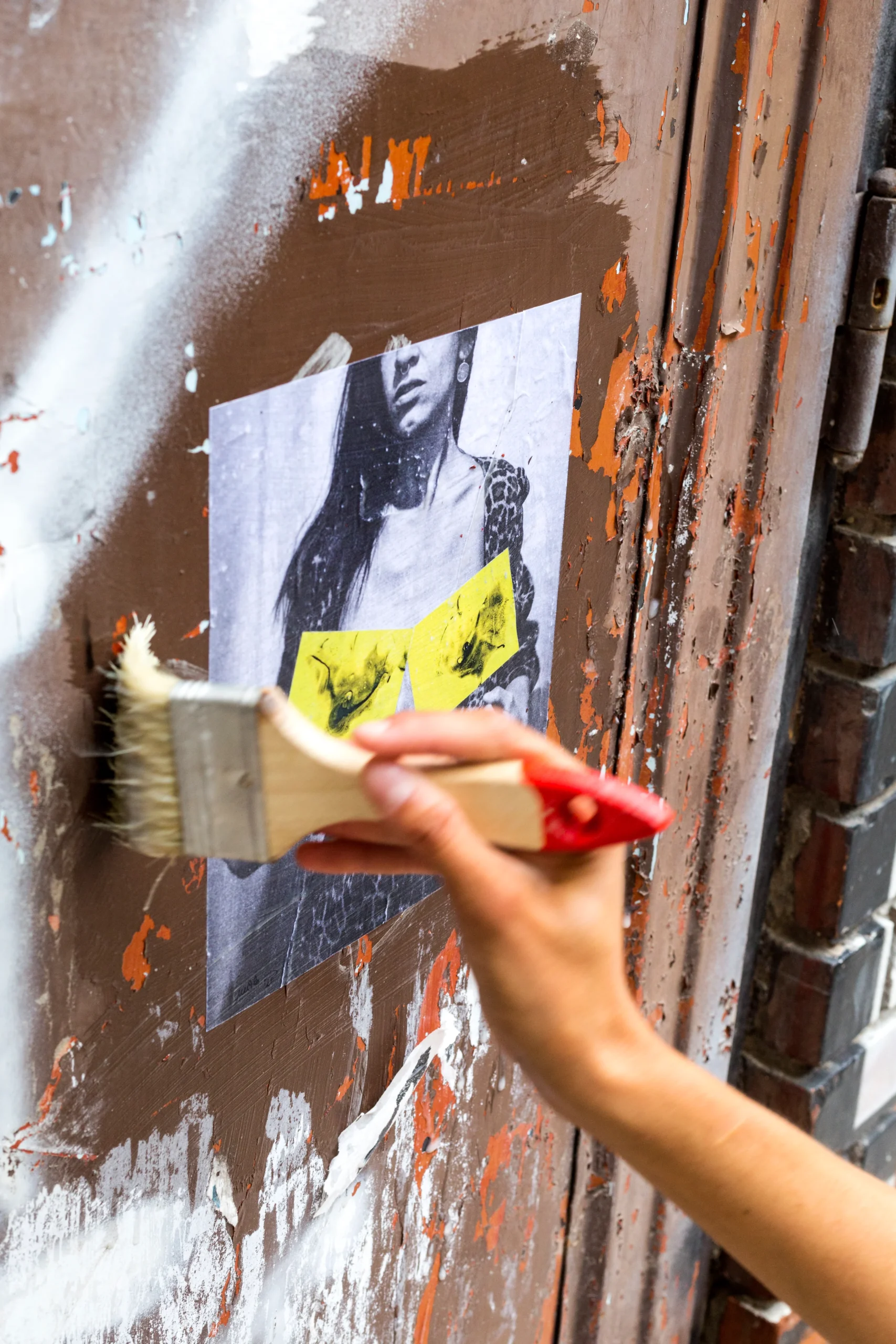
And the posters are based on a plain digital photo, printed at a given size, cut out, stickers or stickers applied on site, and then the whole thing is finalised outside using the classic paste-up technique, that's it. This part is actually more exciting than the full-wall-sized stickers, those are usually made from multiple sheets of print. Then the whole flat is covered in A0 prints, and I measure, count, stack, cut, fine-tune the joints, do the numbering and folding, and sometimes I make mini plans so I know what goes where, when and after what.
The cooking and the quantity of chicken rice is usually already it's not a complicated process, but it took me years and years of practice to get the hang of it. I always enjoy putting on the big glues the most because it takes the longest, but it's still a lot less time than, say, blowing a precise drawing of the same size. I enjoy putting these up in legals or semi-legals, more secluded places, because then I can really just float in the process and the experience of making them.
What inspires you to create?
Oh, a lot of things, but basically I'm a pretty private person. Photography first and foremost, and lots and lots of thoughts that I think are funny or interesting, but others probably think are not so much. I've done a lot of projects that never made it to the street, and somewhere along the line they were probably about the new technique itself, or the mental process involved in creating it. I'm very motivated to experiment, to try out a lot of new tools and forms of creation, but they often end up feeling like a mess. Maybe that's why the apartment looks more like an art gallery than a street these days.
What do you think of street art?
Well, it's a good thing you do. Anything that offers the opportunity for self-expression, and if there are people who take advantage of it, I think that's a fundamental value. Taking a broad view, I see a lot of people and a lot of messages all over the world, and overall there are well-established themes and designs. Individually, of course, they all show a creative individuality, mindset and attitude, but I have come across relatively few that have impressed me personally and made me stop and say, 'well, that's it!
Let's say I'm very strict and critical with a rather specific taste, both here and in the fine arts, perhaps a little too much so. I allow little of my own perspective, which is presumably not always the right approach.
How do you see the current situation of subculture in Hungary?
Gee, that's an interesting question. It seems rather ambiguous at the moment, perhaps that's the best way to put it. I am very heartbroken that I missed the golden age of the streets. In more ways than one, because it means that my life lacks the experience itself, and thus a benchmark. Basically, I have great respect for everyone who is still doing what they can today in whatever form they can, because they keep it all alive. Obviously, there is plenty of subculture to worry about, lots of wounds to bleed from, and of course everything used to be better, but at least there is something.
And of course, the grass is greener abroad in this area too, as everyone can see, than in many other areas, even if only in European terms. I remember coming back to this country from Paris or Athens, for example, was one of the most disappointing experiences, if you approach things from the street subculture point of view, because everything you're used to here can suddenly seem so insignificant. On the other hand, it's nice to see new people coming, there are attempts, people are still discovering this medium and trying to contribute and see things with others, to confront something that sometimes seems absolutely unlivable.
What is the most memorable story that happened to you while exhibiting your work?
Actually I like to make and glue alone, as Mark 0036 mentioned in an interview, it's a lonely genre, which I absolutely agree with and which I actually really like. There have of course been interesting and exciting twists and turns, but for the most part it's really just the company of myself and the beauty of the situations that I find myself in.
What I would perhaps highlight, which is not extreme at all, but left me with a sincerely beautiful memory, was my first graffiti collab with Orick. That was back in the early days, and it was also my first full-wall-scale glue-up. I was nervous as hell and unduly prepared for it, but it turned out to be one of the most exciting collaborations and events of my street career. I was given a lot of motivation, eternal first experiences and precious people, the memory of which has stayed with me and sustained me in this environment ever since.
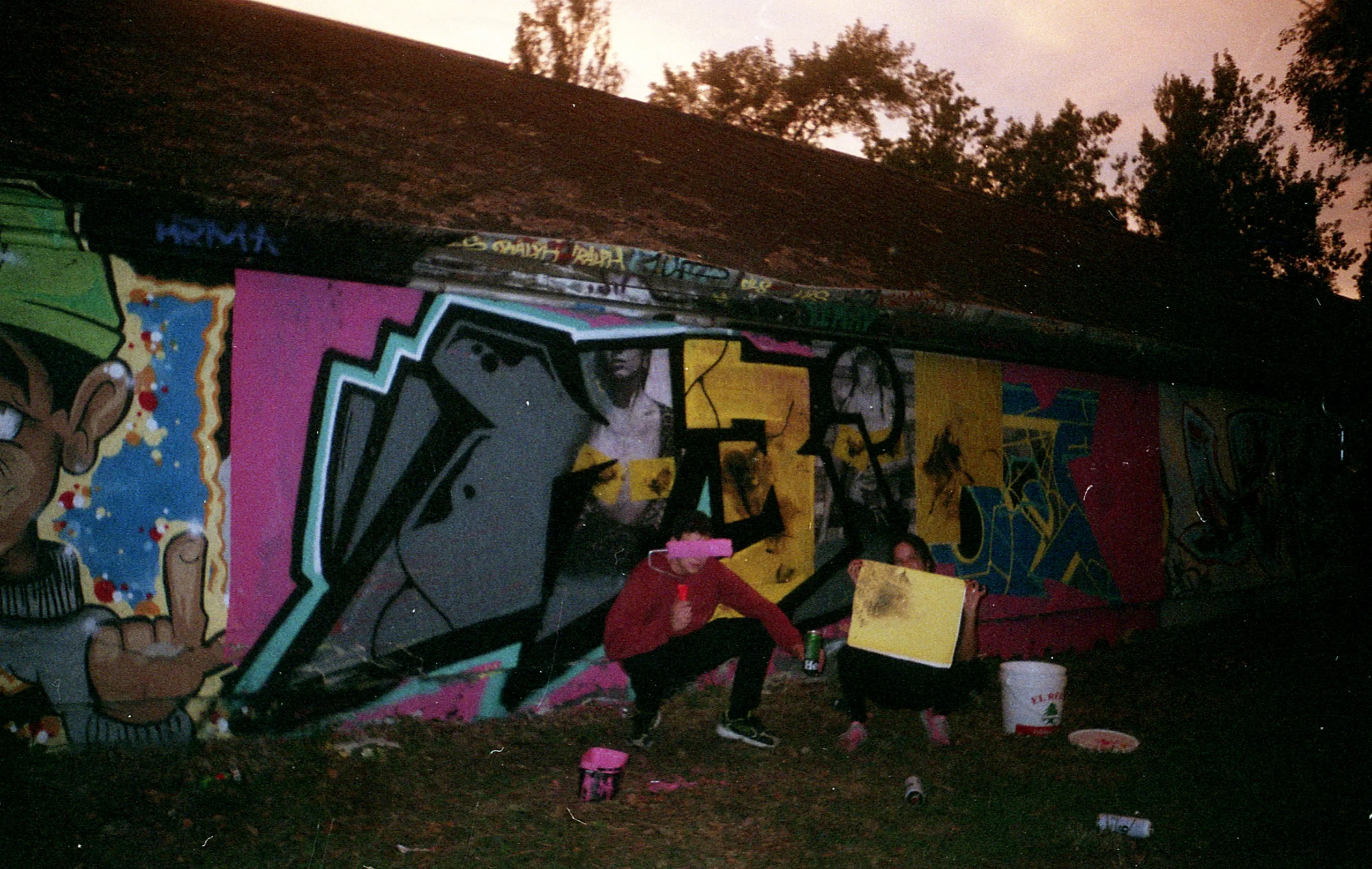
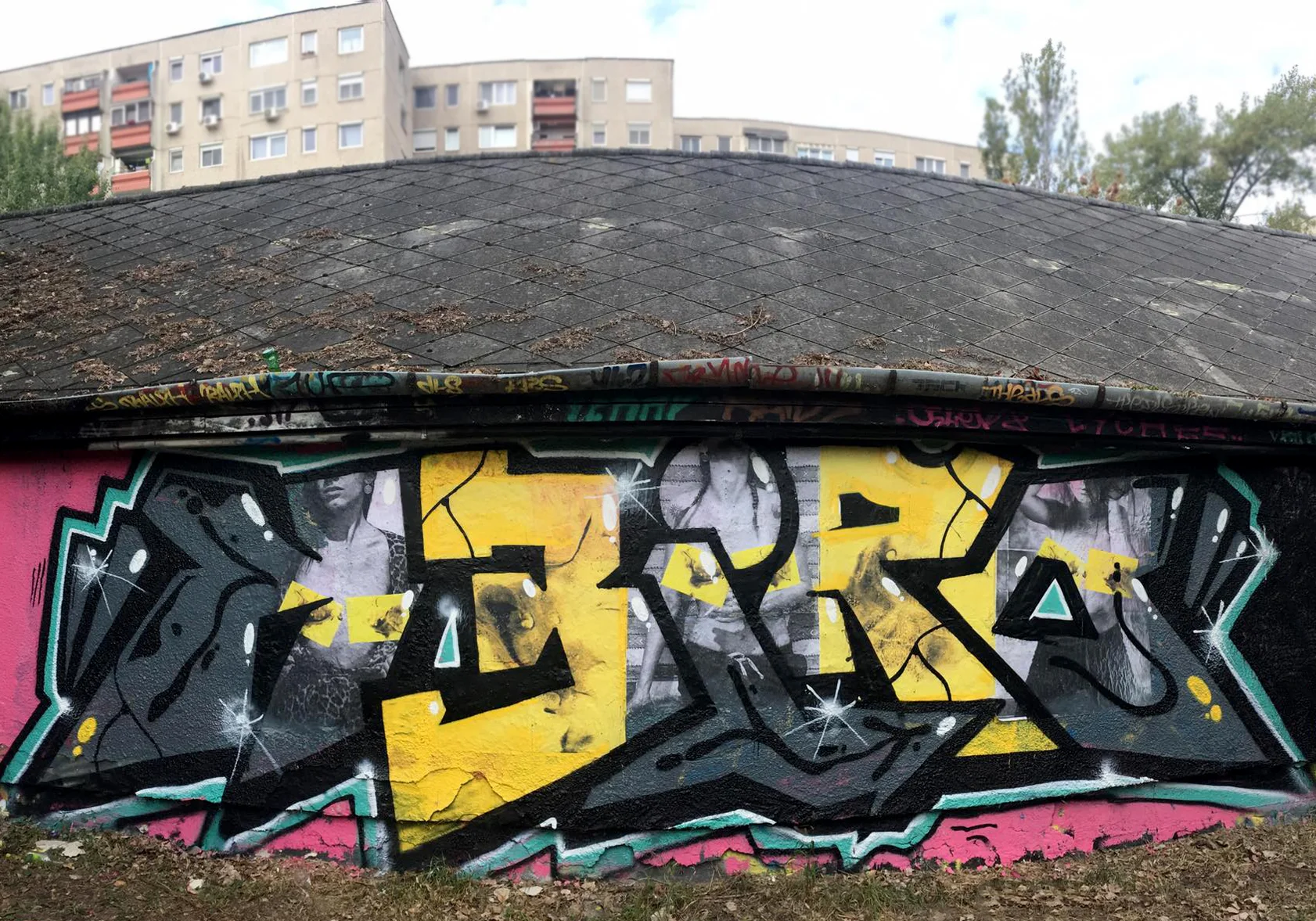
What has this subculture given you over the years?
Oh, what's not to like?! Haha... I think I got it all, really. Cold and hot, friends, enemies, joys and difficulties, many, many unspeakable experiences, miracles and acknowledgements, I could go on and on, and all in all, it's always positive. But what I think is perhaps the most positive is the world itself and the realisation that suddenly became visible to me, and then somewhere a part of me found itself outside.
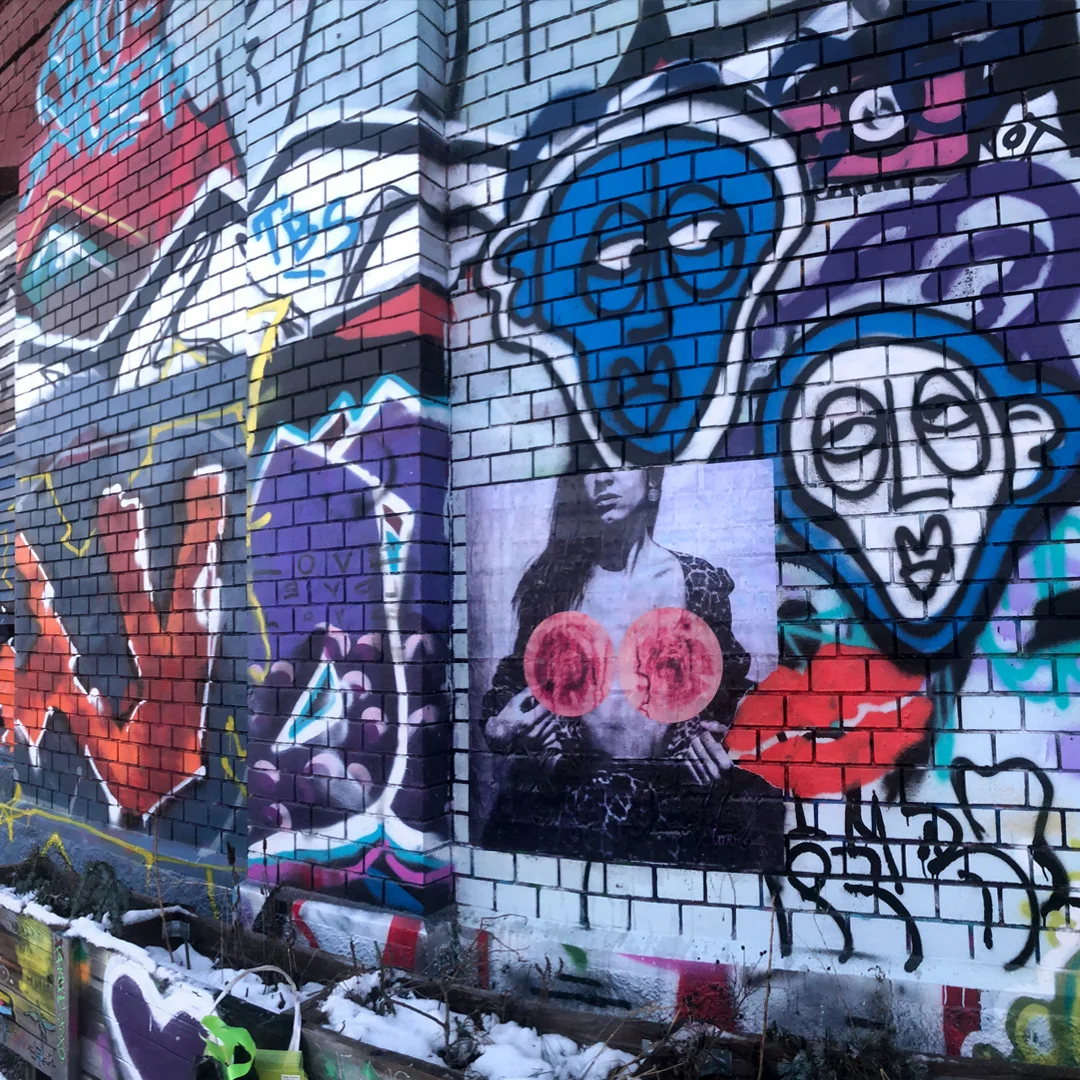
You know, it's like when your eyes are suddenly opened to something that you didn't know for sure, but all the time you had this feeling. And then suddenly it becomes clear and it's really there. That you can see something that others can't, that you can read the signs and see the connections, that you live in something different from all those other plain, ordinary, boring people. There's nothing wrong with them, their lives are probably much more seamless and seamless, but that other is somewhere more just because it's not.
What would you say to those who are just getting to know the genre?
Wow. I don't think my advice would necessarily help anyone, I think there are much more experienced, active and knowledgeable colleagues who can tell you smarter. And for outsiders, there are the street art tours. I don't know, really, it's hard to put into words. If you have the inner motivation to do it, you don't need advice to get started. What is perhaps important, but most people learn this at their own expense, as I did in my day, is fairness, playing by the "rules of the street", and the basic respect for each other.
Of course, it's hard to figure out at the beginning, and you can do without it, but it may not be worth it. And the absolute technical advice is to STICK TO THE CHICKEN, because that's how you'll be comfortable, and I personally believe in sifting the flour with the chickpeas.
Who would you thank for making you stick to your art ?
Phew... I don't know. Stick with it? Hmm... I think it's one of those things that once you have that core, that deep down truth, you can't give it up, it just can't go away even if you wanted it to or if everything is against it. Of course, family, friends and the appreciation and support of everyone you meet in your career is important because they all give you strength and you need criticism and affirmation from many directions. But I don't know...
I was at the point where I felt I was going to quit, as I did on the street, as I did in my art, but I don't know, I couldn't do it in the end, and I can't say why not... It's a difficult question, because it would be pompous to say, oh, thank you, and of course there was a time when I often echoed the phrase ‘never stop what you're doing girl, because you're precious’, but I don't know...
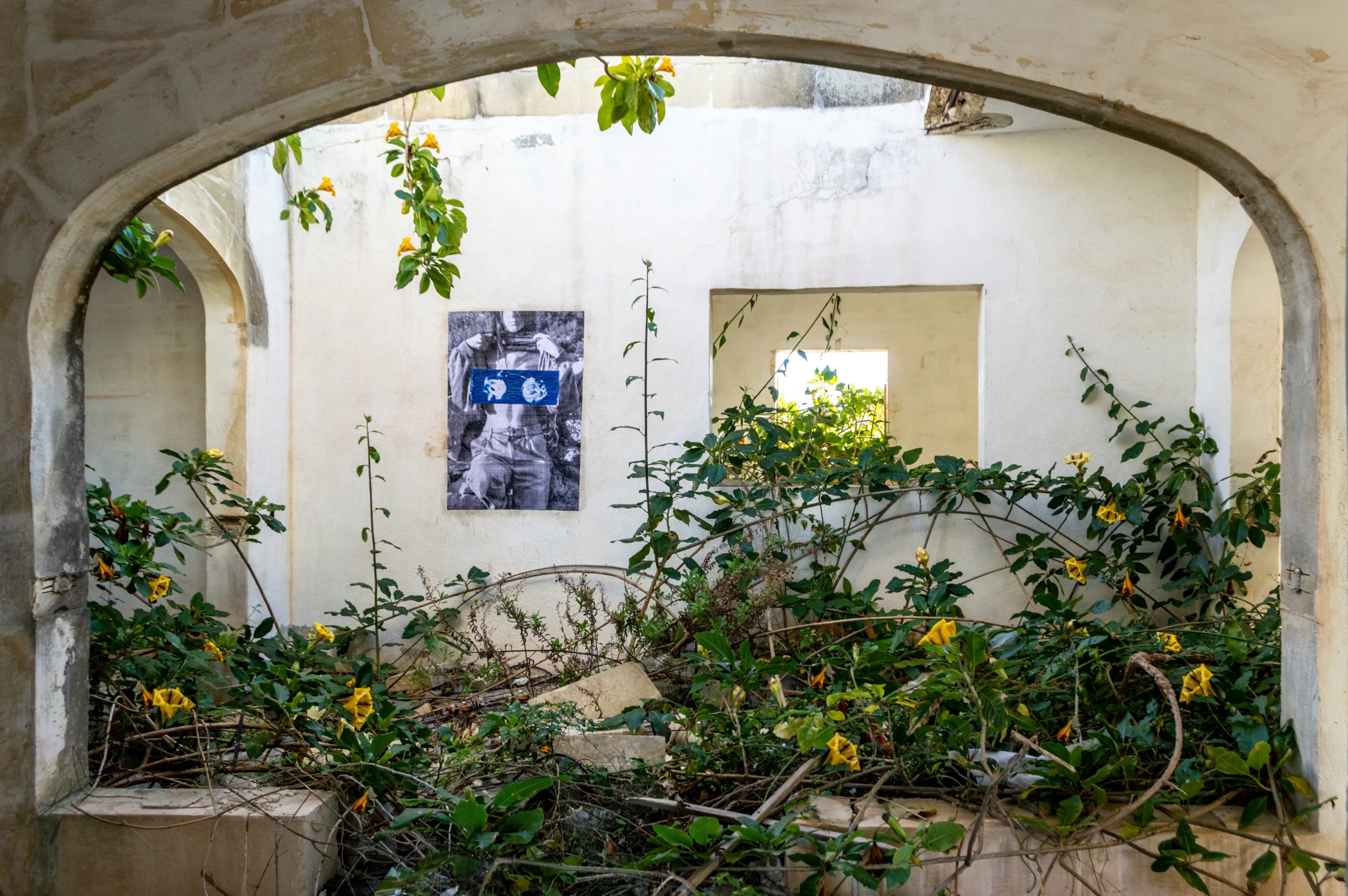
In truth, this question has never occurred to me, because perhaps it was never really an option that this whole thing, and world, and way of life, and part of my being that is called "art" should ever not be present where I am.
Yes, I think that's probably why I can't give a proper answer to this question.
Imola


